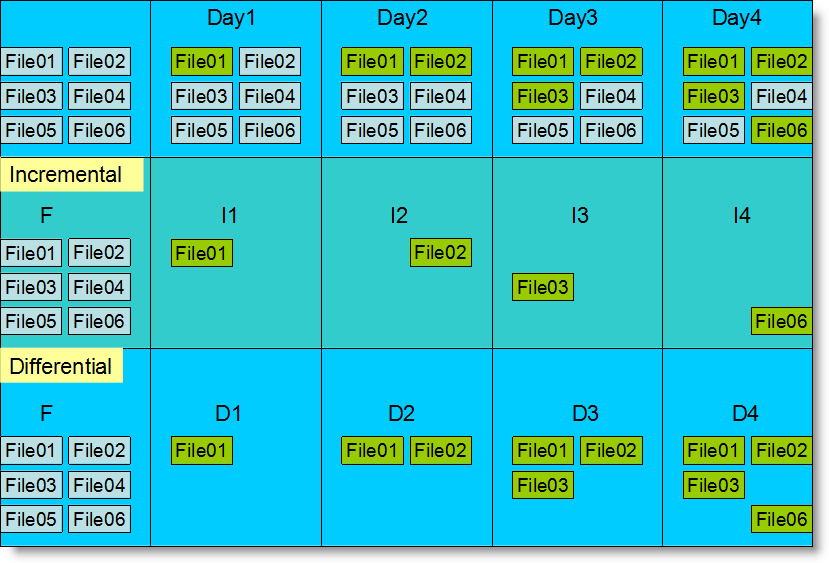Difference Among Full, Incremental and Differential Backup
This article applies to:
All Qiling Backup editions
Description
This article along with a visualized diagram included offers an overall understanding of the differences among the terms "Full", "Incremental" and "Differential" backup.
Full backup
A complete backup of everything you want to backup. The backing up process is the slowest as it needs to back up all selected files by copying all disk sectors with data to the backup image file. It always generates the biggest image files.
However, the full backup is the base for all subsequent incremental or differential backups, which means that a full backup must be created at first before generating incremental or differential backup.
Incremental backup
This method will only back up the files that have changed since the last backup, no matter the last one is Full, Incremental or Differential backup image. Incremental backup is the fastest when creating a backup and the least storage space is needed.
The incremental backup also has its drawbacks, such as restoring from incremental backups is the slowest because it require the full backup it based and many sets of the previous incremental backups to fully restore all the data. If one of the incremental images in the chain is damaged, all of the following images based on it will be unavailable.
Differential backup
The differential backup copy those files that have been changed since the last full backup took place. Since a differential backup directly associates with the original full image, if one differential backup is removed or corrupt, the others will not be influenced.
The differential backup is faster to create than full backup but slower than incremental backup. The restoration speed of this kind of backup image is slower than using the full backup image and faster than using the incremental backup file.
Example to explain the three backup methods
We assume there are 6 files in total, and each day there will be 1 more file modified (file in green box), then Incremental backup and differential backup will work as follow:

Difference in recovery
When recovering with the latest incremental backup, you would need the Full and every Incremental backup for that period. For the restoration of the latest differential backup, you only need the Full and the last Differential backup. Incremental and Differential backup require the prior base of a Full Backup to provide a potentially successful recovery process.
For example, if you want to recover 'Incremental2.fvd', you will use 'Full.fvd', 'Incremental1.fvd' and 'Incremental2.fvd' to finish the restoration.
However, when recovering 'Differential2.fvd', just need 'Full.fvd' and 'Differential2.fvd' to restore the files.
Backup Recovery speed comparison
Full backup requires the longest time to include all files, but it can recover in shortest time as no other image file has to be read first.
Incremental backup can be finished in shortest time, but it usually needs longest time to recover due to read all its based image file first.
Differential backup has medium backup/recovery speed between the other 2 backups.